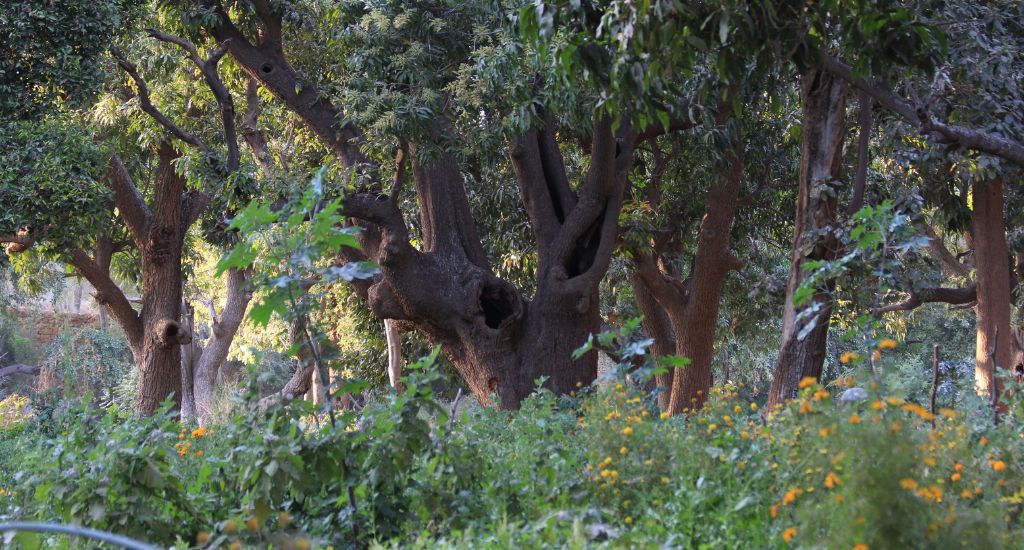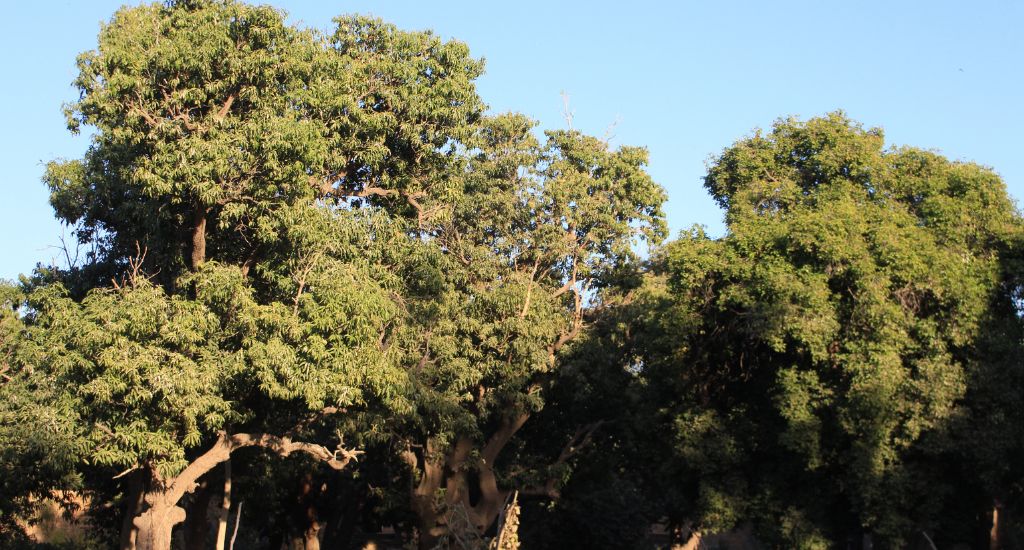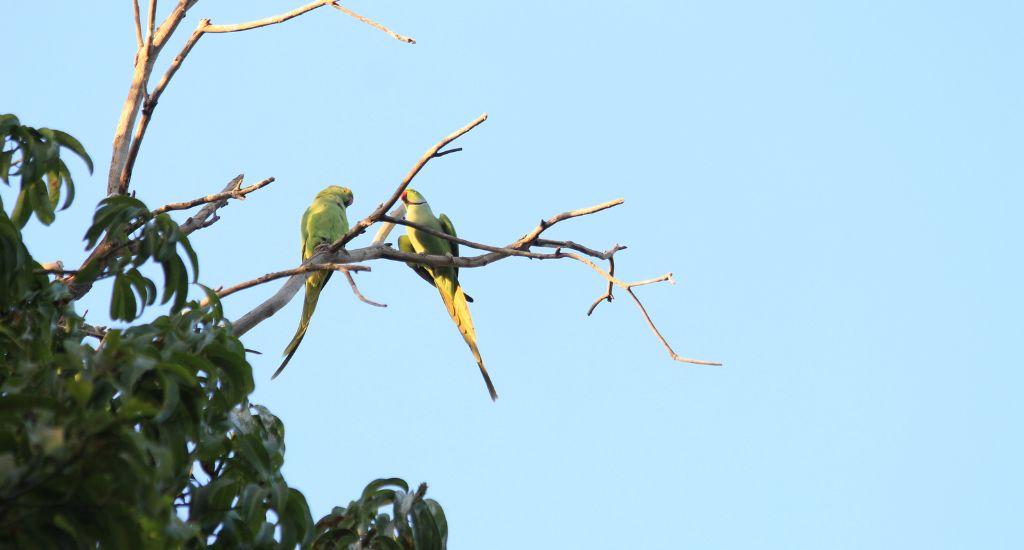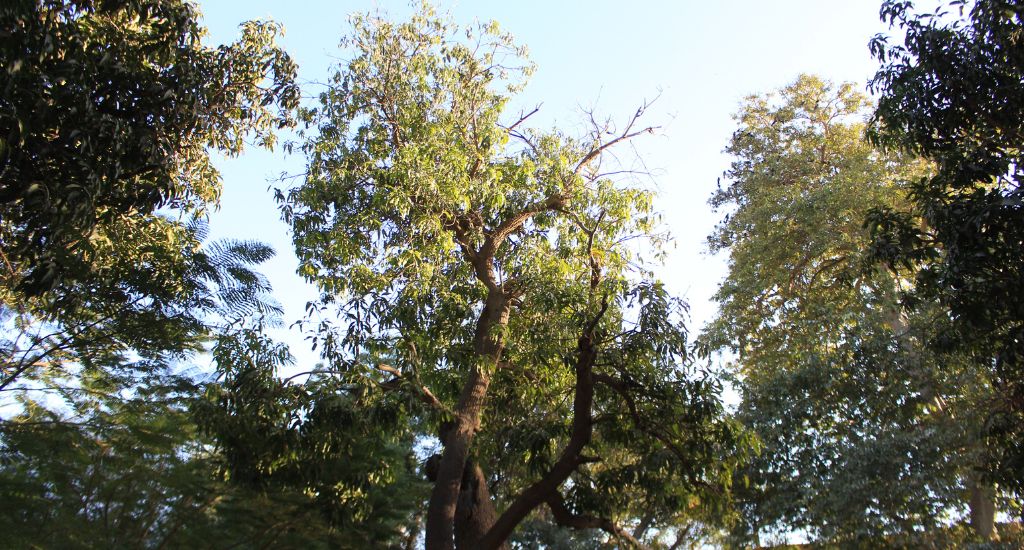
Garden in Thar desert stays green despite climate crisis
Bada Bagh in Jaisalmer has centuries-old trees and continues to defy starkly arid constantly changing weather conditions.

Bada Bagh in Jaisalmer has centuries-old trees and continues to defy starkly arid constantly changing weather conditions.
Sand Dunes are western Rajasthan’s essential iconographies. They capture the courage of people living here for aeons under the harshness of the summer sun. They also make the Thar magical in winter.
In the vastness of this undulating desert, anything green such as a tree is rare. But Jaisalmer’s Bada Bagh – dotted with giant green trees – is a spectacular rarity. The trees in the sprawling garden are centuries old. Many of them bear fruits. The others shine in their green splendour, making the garden a sight to behold.
It is a treasure in an otherwise arid landscape. Owned by the royal family of Jaisalmer, Bada Bagh, spread around 75 acres, boasts of 36 varieties of trees – some three to four centuries old.
“The oldest of them is a mango tree,” points out Parth Jagani, a local conservationist tasked with taking care of the garden.

That the trees have survived and flourished in such a harsh environment is a noticeable manifestation of natural wonder. Standing proudly tall and jostling for space within its premises are Khejri, Jamun, Arjun, Peepal, Neem, Gunda and Babool among others.
A distinct oddity in a desert, the garden comes in for gushing praise from nature lovers.
“The existence of these trees in the garden is no less than a miracle,” insisted Sumit Dookia, a member of the faculty at Delhi’s IP University.
Also Read | Khejri – the wonder tree of Thar desert
But then Bada Bagh is not famous for its trees alone. It, in fact, also mothers some 15 varieties of grass – from Sewan (Lasiurus scindicus), and Dhaman (Cenchrus ciliaris) to Moorath (Brachiaria romosa or browntop millet). It also has some medicinal plants such as Turmeric.
Amplifying its fame also has been the fact that no fertiliser has ever been used in the garden. For that matter, Bada Bagh has been organic over the centuries of its surprising existence.

According to historian Nandkishore Sharma, now 87, the garden is about 400 years old. Its history though is a bit fuzzy and none really has a clue about who planted the seeds of the trees here first.
But folklore has it that the royal family was the primary force behind it and they might have received the seeds as some sort of gift – a part of diplomacy.
The existence of these trees in the garden is no less than a miracle
“Seeds were brought from different parts of the world as presents to the then Maharaja,” Sharma added. He also pointed out that the mango tree – the oldest – could have possibly been planted around 1650 CE.
Also Read | Add Jaisalmer’s desert festival to your bucket list
That the trees bore extremely sweet mangoes further helped the cause of diplomacy. They served as mediators for peace and business.
Dookia agreed that diplomacy could have played a prominent part in the establishment of the garden. One, they grew in Jaisalmer, seen largely to be a sandy waste. Two, they were considered God’s gift.
But that’s a thing of the past now.
The present is beset with problems, including a worsening climate crisis that is endangering the unique garden.
Only recently, one of the oldest trees died. It possibly could no longer withstand the challenges of a fast-changing climate.
“The climate in the desert is changing. It is impacting desert life,” Jagani, the conservationist, explained.

Those in charge of managing the garden, however, are acting to protect the trees. “We are ensuring no other tree has to face what this old one had to undergo,” one of them said.
Fortunately for Bada Bagh, there is a khadeen (local natural aquifer) that lies next to it. The rainwater collected is used to diligently water the garden daily.
Also Read | How climate-induced changes affect children more
The garden, therefore, continues to be green. The royal family asked local conservationists to step in and conserve the garden organically. It’s been two years since then they have been taking care of it.
As roses, marigolds, and jasmine bloom in full splendour, Bada Bagh echoes with the constant chirping of birds, from mynas and koyals to parrots. They collectively tell us that there exists a miracle in Thar, in the shape of the verdant Bada Bagh garden right in the middle of a desert.
The lead image shows a tree growing in the parched desert. (Photo by Amir Malik)
Amir Malik is a freelance journalist based in Bihar. He writes about health, women and children and their interaction with nature. He is a Rural Media Fellow 2022 at Youth Hub, Village Square.